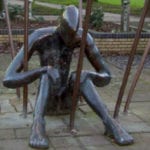 Technology
Technology  Technology
Technology  Humans
Humans 10 Everyday Human Behaviors That Are Actually Survival Instincts
 Animals
Animals 10 Animals That Humiliated and Harmed Historical Leaders
 History
History 10 Most Influential Protests in Modern History
 Creepy
Creepy 10 More Representations of Death from Myth, Legend, and Folktale
 Technology
Technology 10 Scientific Breakthroughs of 2025 That’ll Change Everything
 Our World
Our World 10 Ways Icelandic Culture Makes Other Countries Look Boring
 Misconceptions
Misconceptions 10 Common Misconceptions About the Victorian Era
 Mysteries
Mysteries 10 Strange Unexplained Mysteries of 2025
 Miscellaneous
Miscellaneous 10 of History’s Most Bell-Ringing Finishing Moves
 Technology
Technology Top 10 Everyday Tech Buzzwords That Hide a Darker Past
 Humans
Humans 10 Everyday Human Behaviors That Are Actually Survival Instincts
 Animals
Animals 10 Animals That Humiliated and Harmed Historical Leaders
Who's Behind Listverse?

Jamie Frater
Head Editor
Jamie founded Listverse due to an insatiable desire to share fascinating, obscure, and bizarre facts. He has been a guest speaker on numerous national radio and television stations and is a five time published author.
More About Us History
History 10 Most Influential Protests in Modern History
 Creepy
Creepy 10 More Representations of Death from Myth, Legend, and Folktale
 Technology
Technology 10 Scientific Breakthroughs of 2025 That’ll Change Everything
 Our World
Our World 10 Ways Icelandic Culture Makes Other Countries Look Boring
 Misconceptions
Misconceptions 10 Common Misconceptions About the Victorian Era
 Mysteries
Mysteries 10 Strange Unexplained Mysteries of 2025
 Miscellaneous
Miscellaneous 10 of History’s Most Bell-Ringing Finishing Moves
10 Crimes And Criminals Of Old China
The term “Old China” isn’t used very often these days. The reason is pretty simple: “Old China” is a colloquialism for European-dominated China. It refers to the time period ranging from the signing of the Treaty of Nanking, which ceded certain economic and social privileges to the victorious British after the First Opium War, to the beginning of Japanese occupation in 1937.
Old China was supposedly one roaring party. Not only did both well-heeled and criminally cutthroat Europeans and Americans spend their money foolishly in China, but some even lived there year-round inside of territorial concessions or so-called international settlements. In general, foreigners both inside and outside of China saw it as an essentially lawless den of vice—a land where white merchants ruled the day, while gangsters and a million Sax Rohmer tales owned the night.
In truth, China was indeed a rather dangerous place during this time. Besides cities like Shanghai, where crime was so prevalent that the Shanghai Municipal Police became a small standing army equipped with the best weapons and trained in the latest martial arts, China itself was fractured among several different states, each containing a powerful warlord. Communist guerrilla fighters were a persistent nuisance, and so too were Muslim tribesmen in the country’s far west. In sum, the exoticism of Old China was undergirded by a river of gore. It’s no wonder that criminals and crimes were in abundance.
10 The Green Gang
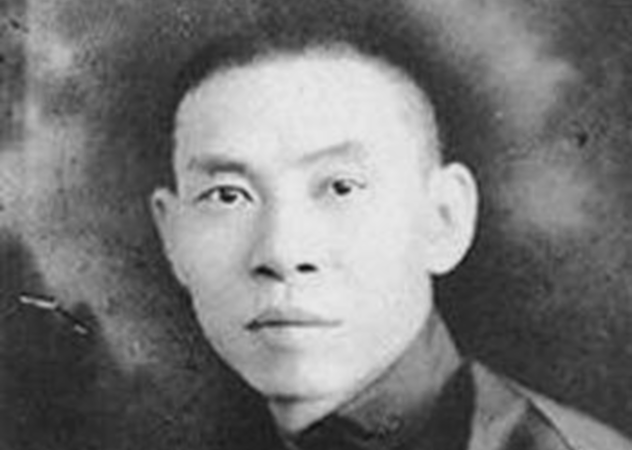
Whether the Green Gang was a leviathan of violent crime or a social organization dedicated to looking after Chinese interests, they certainly wielded plenty of power. Most famously led by Du “Big Ears” Yuesheng (pictured above), a triad boss who bought cops, houses of ill repute, and politicians inside Shanghai’s French Concession, the Green Gang reportedly had their hands deep into every illicit trade in the city. Although this secret society liked to claim that their ancestry stretched all the way back to the Ming Dynasty, the truth is that this well-organized crime outfit didn’t blossom until the advent of Old China. During this time, the Green Gang specialized in the opium trade, which made them very wealthy.
Inevitably, the Green Gang caught the attention of authorities. Rather than completely kill the gang off, Chiang Kai-shek, the leader of the Kuomintang Party that ruled the Republic of China from 1927 to 1937, attempted to co-opt the gang as part of a wider economic network controlled by the state. The Kuomintang also used the Green Gang as political assassins, especially during pitched battles with communist militias.
Ultimately, the Green Gang’s close ties with Chiang Kai-shek and the Kuomintang Party spelled their doom. First, the Japanese militarily defeated Chinese forces on the mainland. Then, after China and the Allies managed to oust the remaining Japanese forces, General Chiang’s exhausted army could not stop Mao Tse-tung’s Chinese Communist Party from winning the civil war that resumed in 1946. By 1947, and certainly by 1950, the Green Gang was no longer a major player in Chinese life.
9 Shanghai Massacre Of 1927
In order to unify China and diminish the power of independent warlords, the Chinese Nationalist Army (then a unified force that was half Kuomintang and half communist) traveled from Guangzhou in the south to the Yangtze River in the north. This military campaign, called the Northern Expedition, lasted from 1926 until 1927 and was backed by Soviet arms and military advisers. The goal was twofold: Chinese nationalists wanted to create a new republican government that would rid China of foreign influence, while the communists wanted to foment a Soviet-style revolution.
At first, both parties managed to find success, gaining battlefield victories over the northern warlords and political victories over the British, who ceded Hankou and Jinjiang back to the Chinese. However, the British were unwilling to give up the lucrative port of Shanghai, so when communist-led labor unions tried to capture the city, Chiang Kai-shek’s Kuomintang forces, along with allied militias and the Green Gang, moved in to suppress them. The result became known as the “White Terror” of 1927, a time when Chiang, in a bid to become the authoritarian ruler of China, purged the Kuomintang of all radical elements.
The Shanghai Massacre, also called the April 12th Incident, not only helped to kick-start the Chinese Civil War between Chiang’s nationalists and the Chinese Communist Party, but it also helped to weaken China—a weakness that Japan would later exploit. All told, the Shanghai Massacre and its aftermath led to the deaths of 12,000 to 50,000 communists, 4,000 of whom died in Shanghai alone.
8 Killing Basil Miles

During the 1920s, China was a hot news item. Thanks to all the warlords as well as the many “Yellow Peril” stories and books being made at that time, people from the US to the UK were interested in the latest wires coming out of China. Because of this, foreign correspondents and other journalists flooded the country. Some invariably came looking for a major story, while others just wanted to play the role of the dashing and heroic scoop who could face danger without missing a deadline.
Basil Miles, a correspondent with The London Times, was just another journalist when he attached himself to the Northern Expedition. Unfortunately, instead of reporting on the news, Miles became the news thanks to his murder. By all accounts, Miles was traveling north by train when he was confronted by bandits. Few particulars about Miles’s murder are known, but it’s safe to say that the bandits probably shot Miles in a manner that was up close and personal. The later killing of Gareth Jones, another reporter from the UK, would seem to support this idea. Tragically, random acts of murder were all too common in Old China, especially in those areas where bandits, warlords, and political fanatics controlled the landscape.
7 Silas Hardoon
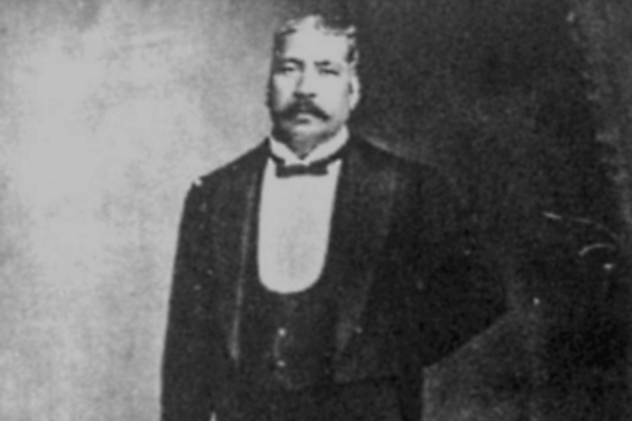
Silas Hardoon was not a typical Westerner in China. Born into a Sephardic Jewish family in Iraq, Hardoon remade himself into one of the richest men in Asia. His gateway to wealth and fame was opium, a substance he sold by the boatload. Once flush with cash, Hardoon married a local girl of mixed European and Chinese heritage (who had also been a prostitute) and began to fund the construction of houses and Buddhist temples.
Hardoon, like the Green Gang, parlayed criminal power into political power. Underneath all the opulence, he was a clever operator who oversaw a private intelligence network that kept him abreast of everything happening in Shanghai. Furthermore, Hardoon’s position as a real estate mogul helped him to gain access to the major players in the French Concession and International Settlement Council.
With all of this influence, Hardoon did much to improve the lot of Shanghai’s Jewish community, while at the same time delighting in shocking polite society. Famously, the drug kingpin–turned–legitimate businessman oversaw a large adopted family of multiracial children. When he died, Hardoon left all of his worldly possessions to his widow, a move that caused quite a bit of controversy. Amazingly, although Hardoon lived a large and lavish life, he is all but forgotten today, even among Western expatriates living in modern Shanghai.
6 Anti-Kidnapping Society

Kidnapping was so common in Shanghai that the very act was called “shanghaiing.” Established in 1912, Shanghai’s Anti-Kidnapping Society set out to combat the city’s top trade, and according to most sources, they were successful. As many as 10,233 women and children were rescued from sex slavery, domestic servitude, and forced labor by the Society from 1913 to 1917.
Formed initially as a local board of directors concerned about the huge kidnapping trade, which usually consisted of capturing women and children in Shanghai in order to sell them to private individuals in the south, the Anti-Kidnapping Society was an all-Chinese organization that received some support from the Chinese authorities in Shanghai. This was important, not only because kidnapping and prostitution formed the backbone of Shanghai’s black market economy, but also because so many Chinese and Western leaders tolerated it. Although the Anti-Kidnapping Society did much to hurt the human flesh trade, they didn’t even come close to breaking the close relationship between Shanghai’s bordello madams and corrupt officials.
5 Huang Jinrong

Along with Du Yuesheng and Zhang Xiaolin, Huang Jinrong was one of the “three Shanghai tycoons” who helped the city to flourish as a gangster’s paradise. A co-founder of the Sanxin Company, which was the principal distributor of opium in China, Huang was one of the wealthiest gangsters in the East and a feared man. Supposedly obsessed with money and making even greater profits, Huang and the other “tycoons” were reportedly responsible for one-third of Shanghai’s total income.
Unfortunately for Huang (who was known as “Pockmarked” in the underworld), his reign as the senior leader of Shanghai’s criminal underground didn’t last long. While he and his allies in the Green Gang controlled Shanghai’s drug and prostitution trades, their growing attachment to General Chaing’s Kuomintang caused internal divisions to form. Specifically, the ambitious Du saw the “White Terror” era as a way to position himself as the top man in the gang. In 1927, while the city was under martial law, Du ordered the arrest of Chin Peide, one of Huang’s lieutenants, under the pretense that he was a communist. Although Peide was eventually released thanks to the power of “Uncle Huang,” the move proved that Du was no longer scared of Huang and his power.
Ironically, while Huang was serving as an adviser to the Green Gang, he was also one of the most respected detectives in the French Concession Police. In 1953, Huang died under a cloud of suspicion. Foul play may have been involved; just two years earlier, Du had died from poisoned opium. The era of the Green Gang died not with a bang, but with choking whispers.
4 The Juye Incident
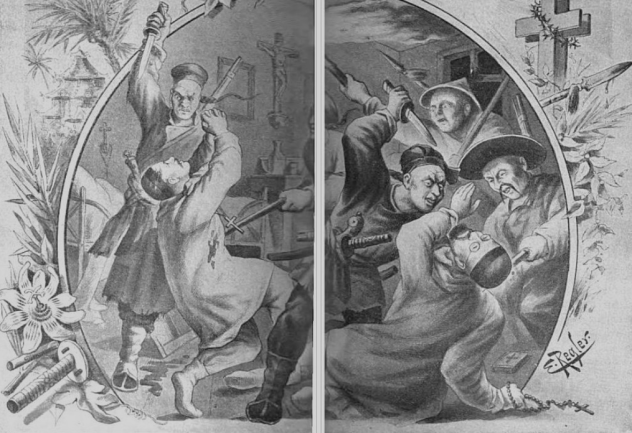
Christianity was an incendiary religion in late 19th-century China. Although home to thousands of foreign missionaries and native Christians, China was also populated by many Buddhist, Muslim, Taoist, and folk religion practitioners who considered the Christian religion a foreign plot to further dominate Chinese culture. As a result, roving bands of nationalist fighters frequently targeted missionaries, churches, and Christian villages. On All Saints’ Day 1897, three German missionaries (George Stenz, Richard Henle, and Francis Xavier Nies) were attacked in the Juye portion of Shandong Province. The armed bandits, who numbered 20–30, managed to hack Henle and Nies to death before retreating back into the night.
The Juye Incident, along with other reports claiming that German-run churches were being burned, gave the German government a reason to solidify their control over Shandong. That November, three German warships occupied Jiaozhou Bay and forced the Qing government to grant Germany a concession in Jiao’ao. Soon thereafter, the French, the Japanese, the British, and the Russians all demanded more territorial concessions. These power grabs, along with several natural disasters and a lack of economic opportunities for the peasants of Shandong, helped to inspire the xenophobic Boxer Rebellion, which would claim over 100,000 Chinese lives.
3 The Kucheng Massacre

Two years before the Juye Incident, a group of British missionaries were the targets of nationalist rage. On August 1, 1895, members of a Buddhist secret society called the “Vegetarians” by the Western press (due to the group’s dietary restrictions), attacked a group of sleeping Anglican missionaries in the village of Huashan in Fujian Province. All told, the Vegetarians killed 11 people, most of whom were women, right after dawn.
In response, the British government sent gunboats to the area in order to put down what they considered to be an open rebellion. The British authorities were right, but full-on rebellion (aka the Boxer Rebellion) was still a few years away. In the meantime, those responsible for the massacre, which was then the second-deadliest assault on Westerners in China after the 1870 Tianjin Massacre, were arrested and ultimately executed in September 1895.
2 The Murder Of Emperor Guangxu
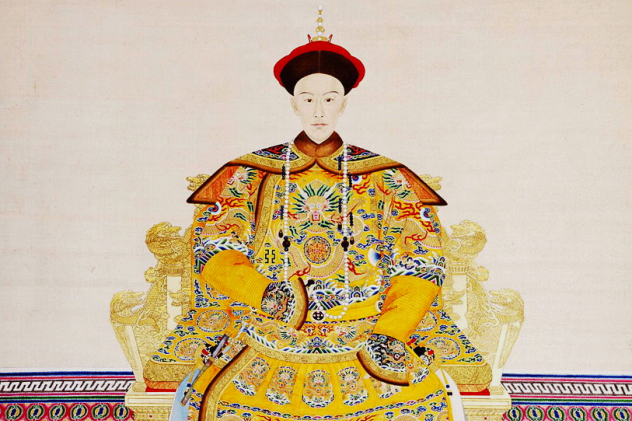
Although the ninth emperor of the Qing Dynasty, Guangxu held very little power. Not only was Imperial China’s power dwindling to almost nothing, but the throne itself truly belonged to Empress Dowager Cixi, a canny political operator who controlled the Qing Dynasty for decades. Under Cixi’s reign, the Qing Dynasty limped into the 20th century as a venal and highly corrupt state.
After the death of Emperor Tongzhi, Cixi, his mother, adopted her five-year-old nephew Guangxu as her son. This was done in order to maintain Cixi’s control over the government until Guangxu came of age. When the young emperor finally did manage to wrest control away from Cixi in 1898, he tried to radically alter the way that the Chinese state did business. Called the Hundred Days of Reform, Emperor Guangxu and his followers attempted to implement Western models of industry, medicine, science, commerce, and administration in China. The military was likewise reformed in order to make it competitive with European men-at-arms.
The Hundred Days of Reform deeply disturbed traditionalists within the Qing Dynasty, one of whom, a military commander named Ronglu, sought to undermine Guangxu by helping Cixi to return to power. Once back in the palace, Cixi locked the emperor away and told the world that he was ill. When Cixi died in 1908, the Qing Dynasty passed into the young hands of Puyi, Guangxu’s three-year-old nephew. At the same time, word leaked that Guangxu had passed away from an unspecified illness.
For years afterward, many continued to believe that Guangxu had been poisoned by either Cixi or one of his own eunuchs. In 2008, a team of scientists found a hair sample taken from Guangxu’s corpse to contain a level of arsenic 2,400 times higher than normal. The emperor’s bones contained arsenic as well, suggesting that he had indeed been murdered.
1 The Murder Of Pamela Werner
Pamela Werner, the 19-year-old adopted daughter of veteran British diplomat and sinologist E.T.C. Werner, failed to return home after a skating date during the winter holiday of 1937. Pamela, who was something of a wild child at Tientsin Grammar School, was found the next morning. Rather, her horribly mutilated body was found next to the old city wall in Peking (known today as Beijing).
Recounted in Paul French’s Midnight in Peking, police discovered signs indicating that Pamela had been sexually assaulted either before or after her murder. Not only had the girl’s face been beaten and stabbed, but the rest of her body had been similarly treated to deep stabs and cuts. Worst of all, detectives found that Pamela’s sternum had been cut open by her killer, revealing not only a set of broken ribs, but also a missing heart.
Pamela’s effectively bloodless corpse grabbed headlines in Peking for a time, but despite public pressure, the police never managed to catch the killer. By summer 1937, the Second Sino-Japanese War was underway, and the terrified inhabitants of Peking no longer cared about one dead girl.
As far as suspects go, E.T.C. Werner suspected a US dentist named Dr. W.B. Prentice. Apparently, Prentice belonged to a Peking love cult, and Werner contended that Prentice had killed his daughter after a botched rape. Others pointed to Werner himself as the guilty party. This belief was bolstered by the suspicious suicide of Werner’s much younger wife, Gladys, in 1922. As for Paul French, his favorite suspect is Prentice, along with four foreigners named Joe Knauf, Dr. Carpuzzo, Pinfold, and George Gorman. French echoes Werner’s conclusion by arguing that these members of the secretive love cult had killed Pamela after she refused to participate in a drunken orgy at a Russian bordello in Peking’s Badlands.
Benjamin Welton is a freelance writer based in Boston. His work has been published in The Weekly Standard, The Atlantic, Listverse, and others. He currently blogs at literarytrebuchet.blogspot.com.

